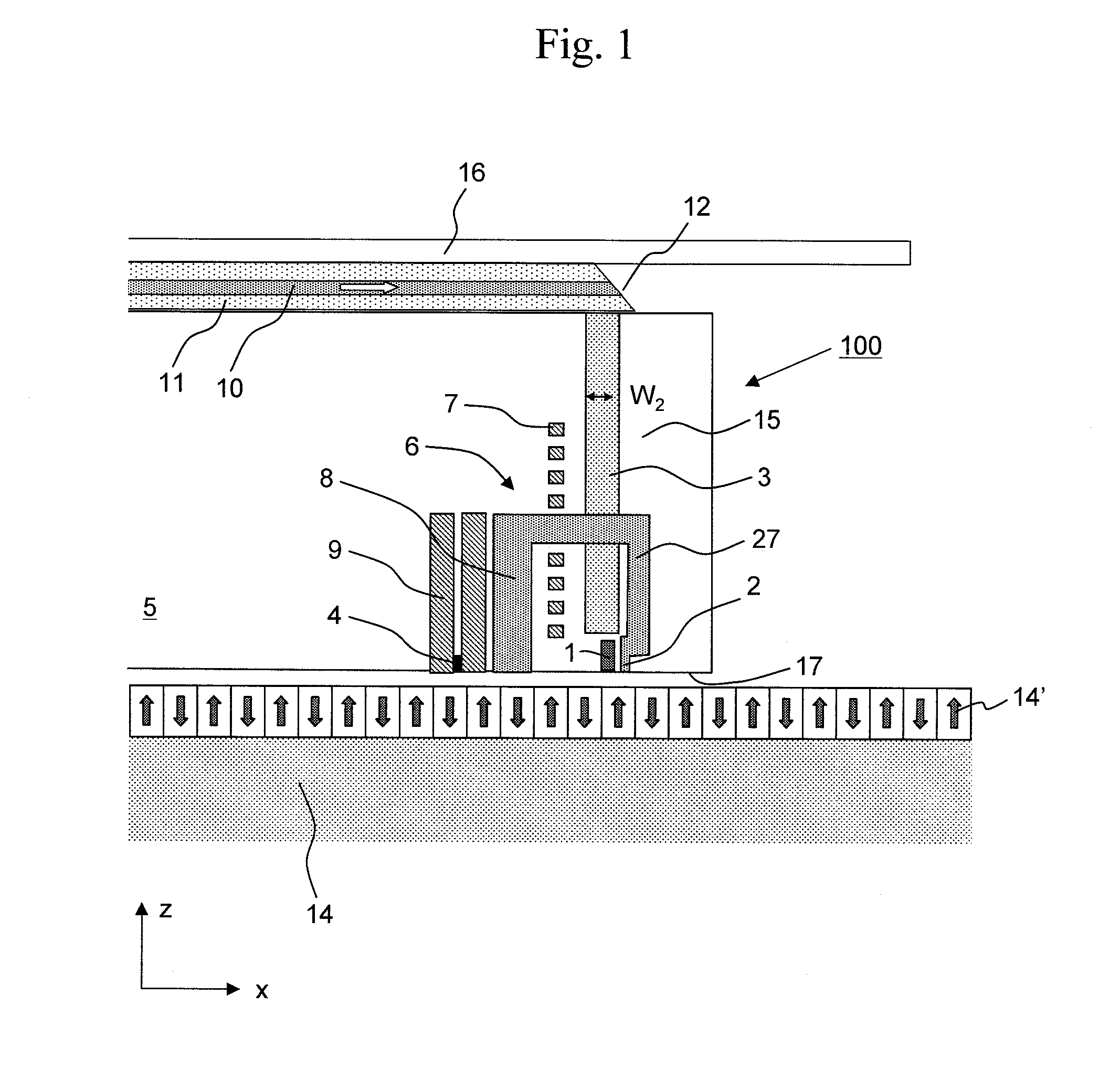Heat-assisted recording head and heat-assisted recording device
a recording head and recording technology, applied in the field of heat-assisted recording head and heat-assisted recording device, can solve the problems of excessive increase of coercivity, loss of information recorded at a recoding density of 1 tb/insup>2 /sup>or higher, and inability to form recording bits on the medium, etc., to achieve the effect of reducing the propagation loss of a waveguide for guiding light to a scatterer
- Summary
- Abstract
- Description
- Claims
- Application Information
AI Technical Summary
Benefits of technology
Problems solved by technology
Method used
Image
Examples
Embodiment Construction
[0045]Hereinafter, embodiments of the present invention will be described with reference to the drawings.
[0046]FIG. 1 shows a configuration example of a thermally assisted magnetic head 100 according to the present invention.
[0047]A semiconductor laser having a wavelength of 780 to 980 nm is used as a light source, and is installed around the base of a suspension (see reference numeral 55 in FIG. 20). A polymer waveguide 10 (a core portion shown in FIG. 1) is used to propagate light from the light source to a slider 5. The polymer waveguide 10 is placed on the suspension 16. A 45-degree mirror 12 is formed on an end surface of the polymer waveguide 10 so that the light exiting from the polymer waveguide 10 can exit in a direction orthogonal to an upper surface of the slider 5. Although the polymer waveguide 10 is used as a waveguide for propagating light from the light source to the slider 5 in this embodiment, other types of waveguides formed of quartz fiber, plastic fiber and the ...
PUM
| Property | Measurement | Unit |
|---|---|---|
| length | aaaaa | aaaaa |
| length | aaaaa | aaaaa |
| height | aaaaa | aaaaa |
Abstract
Description
Claims
Application Information
 Login to View More
Login to View More - R&D
- Intellectual Property
- Life Sciences
- Materials
- Tech Scout
- Unparalleled Data Quality
- Higher Quality Content
- 60% Fewer Hallucinations
Browse by: Latest US Patents, China's latest patents, Technical Efficacy Thesaurus, Application Domain, Technology Topic, Popular Technical Reports.
© 2025 PatSnap. All rights reserved.Legal|Privacy policy|Modern Slavery Act Transparency Statement|Sitemap|About US| Contact US: help@patsnap.com



